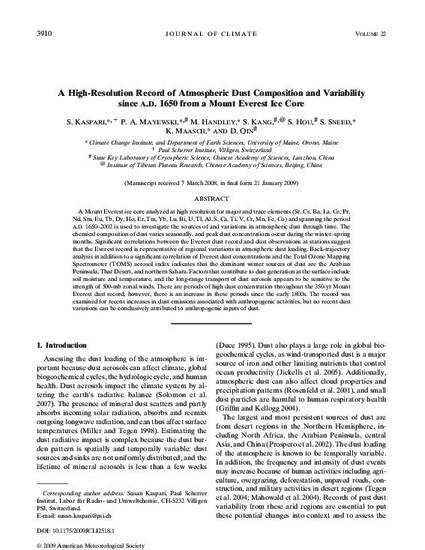
A Mount Everest ice core analyzed at high resolution for major and trace elements (Sr, Cs, Ba, La, Ce, Pr, Nd, Sm, Eu, Tb, Dy, Ho, Er, Tm, Yb, Lu, Bi, U, Tl, Al, S, Ca, Ti, V, Cr, Mn, Fe, Co) and spanning the period A. D. 1650- 2002 is used to investigate the sources of and variations in atmospheric dust through time. The chemical composition of dust varies seasonally, and peak dust concentrations occur during the winter-spring months. Significant correlations between the Everest dust record and dust observations at stations suggest that the Everest record is representative of regional variations in atmospheric dust loading. Back-trajectory analysis in addition to a significant correlation of Everest dust concentrations and the Total Ozone Mapping Spectrometer (TOMS) aerosol index indicates that the dominant winter sources of dust are the Arabian Peninsula, Thar Desert, and northern Sahara. Factors that contribute to dust generation at the surface include soil moisture and temperature, and the long-range transport of dust aerosols appears to be sensitive to the strength of 500-mb zonal winds. There are periods of high dust concentration throughout the 350-yr Mount Everest dust record; however, there is an increase in these periods since the early 1800s. The record was examined for recent increases in dust emissions associated with anthropogenic activities, but no recent dust variations can be conclusively attributed to anthropogenic inputs of dust.
Available at: http://works.bepress.com/kirk_maasch/8/
